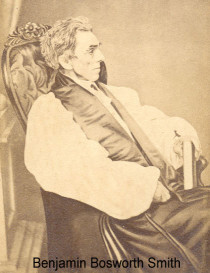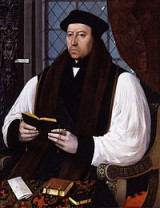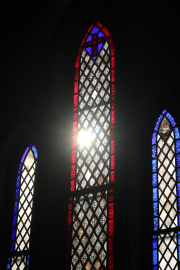
Church History
The Episcopal Church is a community of faith that seeks to respond to the Gospel of Jesus in word and deed. The Episcopal Church is the Province of Anglican Communion in the US, Honduras, Taiwan, Colombia, Ecuador, Haiti, the Dominican Republic, Venezuela, the British Virgin islands and parts of Europe.
The Church was organized shortly after the American Revolution when it was forced to separate from the Church of England, since Church of England Clergy were required to swear allegiance to the British Monarch. It became, in the word of the 1990 report of the Archbishop of Canterbury's Group on the Episcopate, "the first Anglican Province outside the British Isles". Today it is divided into 9 provinces. The Episcopal Diocese of the Virgin Islands encompasses both American and British territory.
St. Philip's is part of the Diocese of Lexington
On February 12, 1850, an Anglican group was incorporated at St. Philip's Episcopal Church in Harrodsburg. The cornerstone was laid on April 17, 1860, the church was dedicated May 15, 1861, and the first service was held September 12, 1861.
Design and construction were supervised by the Right Reverend Benjamin Bosworth Smith, first Bishop of Kentucky. Bishop Smith carved a wooden model, including the furniture, to be used as a "blueprint" for the building, patterned after a small church in England that he had attended as a boy. In addition to the model, Bishop Smith carved the freestanding altar, three ecclesiastical chairs and the communion rail in the church itself. In addition to these hand carved pieces, St. Philip's has other notable interior features including a baptismal font of fine, old china and leaded stained glass windows (with etching) of probable European import. These were the first stained glass windows in any building in Harrodsburg.
A young lieutenant under command of General Leonidas Polk saved the church from damage during the Civil War. On October 9, 1862, the day after the Battle of Perryville, General Polk, known as the Fighting Bishop of the Confederacy, retreated with his beleaguered troops to Harrodsburg, where he saw the church doors standing open. He entered and asked that the bell be tolled. Then he prayed for the men on both sides, "friend and foe alike." An historical marker adjacent to the church commemorates this event.
The essential character of the 150 year-old church building has been carefully preserved. St. Philip's was placed on the National Register of Historic Sites in 1978. Even though our numbers have never been great, we are an energetic congregation. This is shown by the major restorations to the church in 1983 and 1999. The building was stabilized, air conditioning added, a new copper roof installed, and the windows, walls and brick exterior were repaired. These repairs and improvements were accomplished with generous donations from the members and friends of St. Philip's. We have recently overhauled the heating plant, made improvements to the copper roof, and repainted sections of the interior.
The St. Philip's Parish House is adjacent to the church. Before being acquired by St. Philip's it was used by a medical practice. We have conducted extensive renovations to the Parish House recently to provide better facilities for Christian education, fellowship, and administrative functions. Since 2001 we have created three new classrooms, a Christian education office, and a clergy office, upgraded the existing church office, and renovated our general meeting room. Central air conditioning and a new heating system have been installed and the insulation and electrical systems have been upgraded. Preliminary plans are being developed to renovate the existing kitchen facilities.
What is Morning Prayer?
Morning Prayer originated in 1549. This was a time when religious reformation was sweeping through Europe. Martin Luther published his ninety-five theses in 1517; John Calvin was active in Geneva in the mid-1500's. Religious change was also taking place in England, the birthplace of the Episcopal Church. Prior to this time, people only occasionally attended their local parish church. Though services were generally held weekly, people often attended sporadically and received Communion once a year, usually at Easter. Regular worship took place mainly in monasteries, where a series of eight services were held daily. Monks said prayers and read prescribed Scripture passages at each service. The readings were designed so that the monks read through the entire Psalter every month (in the Western Church) and read through most of the rest of the Bible in the course of the year.
In 1549 Thomas Cranmer, Archbishop of Canterbury, published the first Book of Common Prayer. In it he synthesized the eight monastic services into two: morning prayer and evening prayer. Prior to 1549, church services in England were conducted in Latin, which very few people spoke. The services usually included little Scripture reading, no sermon and were mainly focused on the Eucharist. Worshipers stood (there were no pews) and watched the priest mutter rapid-fire prayers from the altar located at the front of the church. The priest often had his back to them while he prayed and celebrated Eucharist. He did this in Latin, which they could not understand.
Archbishop Cranmer was very interested in making Scripture widely available in English to worshipers. He realized that the majority of people in England could not read, and so designed morning and evening prayer to include a large amount of Scripture reading in English. In this way, even though parishioners might not be able to read the Bible, they heard a great deal of Scripture read to them in a language they could understand. Like our services today, morning prayer in the mid-1500's included the reading of a Psalm, an Old Testament reading, an New Testament epistle (i.e. non-Gospel) reading, and a Gospel reading.
Cranmer also mandated that clergy preach at each service (a significant innovation for the Church at that time). Before this time, preaching was
mostly done by friars: priests specially trained to preach and who were tasked to travel from town to town on preaching missions. Parish priests as a rule did not preach. For any of Archbishop
Cranmer's clergy who were uncomfortable or unable to write their own sermons, he published a Book of Homilies that contained prewritten sermons that they could read to their congregations on Sunday
morning.




